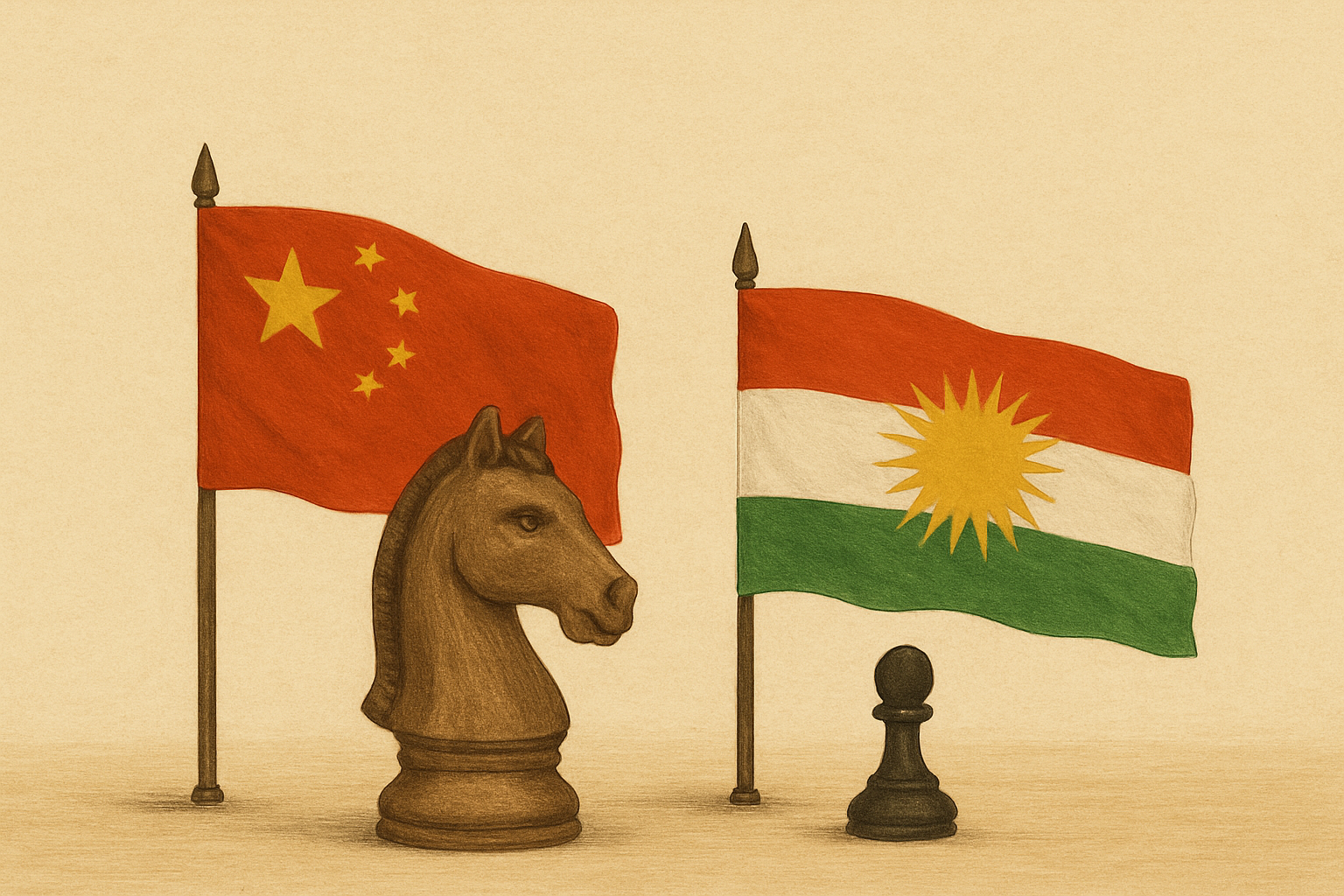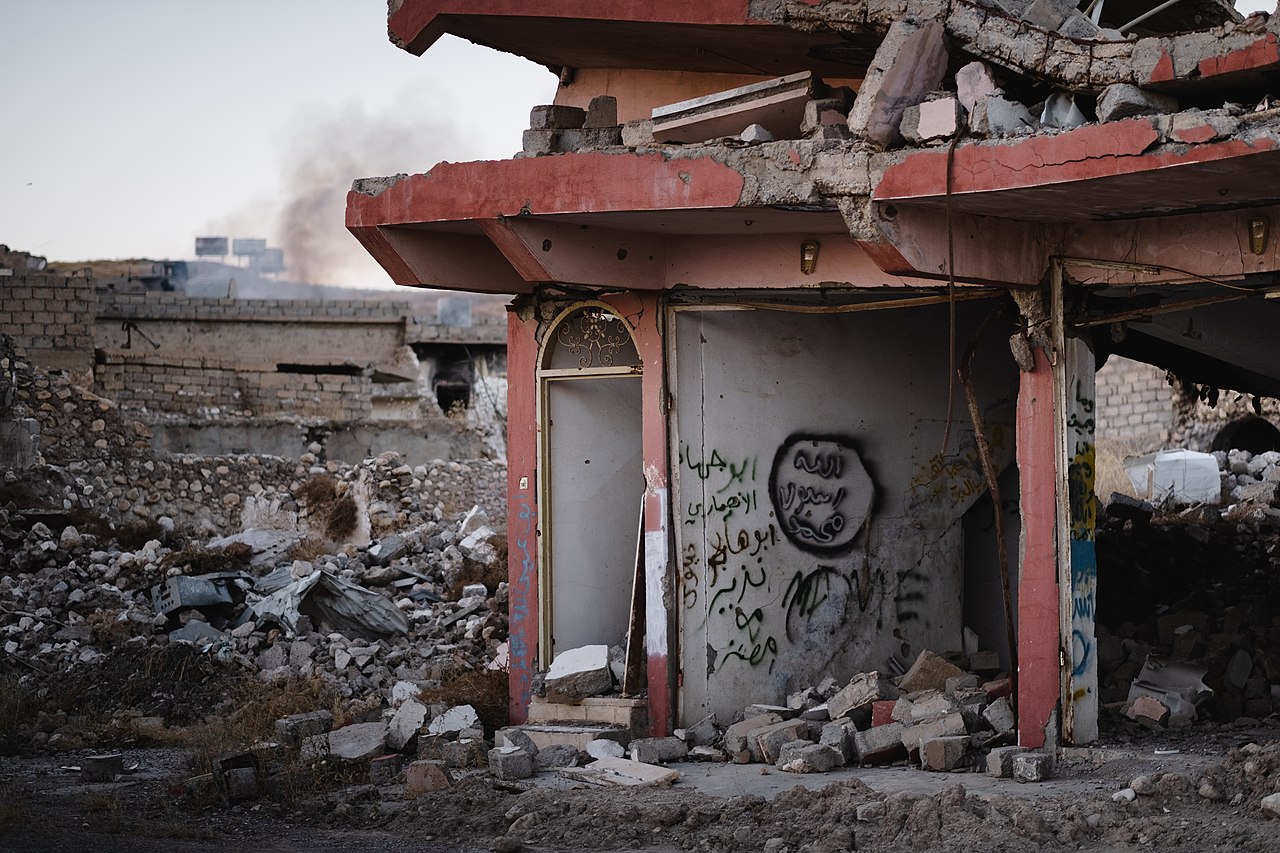Al-Sharaa and the Dilemma of Combating Terrorism
Tom Barrack met with Ahmed al-Sharaa in Syria in May 2025 | Picture Credits: Tom Barrack’s X Account/Wikimedia Commons
In line with the US administration’s “security first” approach laid out by US Ambassador to Turkey and Special Envoy to Syria, Tom Barrack, the most striking aspect of Syrian interim President Ahmed al-Sharaa’s visit to Washington, D.C. was Syria’s joining the International Coalition against terrorism as the 90th member state. Given al-Sharaa’s fundamentalist background, this brings into question the effectiveness with which the Syrian state can address the coalition’s goals in Syria.
It is evident that Washington is pursuing a security-focused strategy to reshape the Middle East rather than prioritizing political transition.
In reality, Syria remains caught in the fragile state-building phase that follows civil war. It is evident that Washington is pursuing a security-focused strategy to reshape the Middle East rather than prioritizing political transition. From this perspective, Washington’s main objectives in Syria include combating terrorism. This encompasses the remnants of IS, the Iranian Revolutionary Guard, Hezbollah, and Hamas. Washington also seeks to integrate Syria into the US-Israeli axis for the first time since the former gained independence in 1946, in exchange for lifting sanctions and facilitating foreign investment.
Ahmed al-Sharaa, for his part, expressed his willingness to pursue this new course of action, despite the controversy stirred up by the American press regarding his jihadist past and his previous ties to the IS. Nevertheless, al-Sharaa, bolstered by both Western and regional public relations campaigns, promotes the narrative that his organization has opposed IS since 2015. Similarly, other sources indicate that his group has been coordinating intelligence and exchanging information with the Coalition since 2016, particularly in Idlib province, and that al-Sharaa’s rhetoric has shifted accordingly.
The Legacy of Jihadism
Despite this rhetorical shift, al-Sharaa’s fighters, both foreign and local, remained tainted by war crimes, even after he assumed power following Assad’s downfall, particularly in the Syrian coastal region and in Suwayda.
Islamic Fundamentalism remains the core of the military and security apparatus of the al-Sharaa group, and the deeply rooted jihadist ideology held by the al-Qaeda affiliated fighters who form the backbone of al-Sharra’s government
In practice, al-Sharaa chose pragmatism as a path to survival after the Coalition declared war on terrorist groups in Syria in 2015, and especially after Washington’s designation of al-Nusra Front as a terrorist organization since 2012. This pragmatic discourse cloaks its political transformation in a veneer of supposed ’moderation.’” At the same time, its ideological structure and practices retain the legacy of jihadist influences. Islamic Fundamentalism remains the core of the military and security apparatus of the al-Sharaa group, and the deeply rooted jihadist ideology held by the al-Qaeda affiliated fighters who form the backbone of al-Sharra’s government, clashes with the US’s strategy of eliminating all forms of terrorism.
This contradiction was evident in the recent clashes between al-Sharaa’s “General Security” forces and his former French fighters in the Harim camp in Idlib. Such confrontations with foreign fighters are likely to recur and reveal the interim President’s limited control over his fighters, therefore casting serious doubt on his promises to the international community.
The al-Sharaa government is also proposing what it calls a “technical solution” to address the issue of foreign fighters: enlisting them as individuals into the national army. However, this proposal carries profound structural risks. Foreign fighters belong to diverse ethnic and national groups, ranging from French to Uzbeks, Uighurs, Tajiks, Turkmen, and Arabs. Integrating them as a single bloc within the military could open the door to sharp internal divisions, while integrating them as individuals may seem unacceptable to most groups, notwithstanding a small segment that agrees.. The latter could also provoke rejection from Washington, especially if such integration allows some foreign fighters to assume senior positions within the military, which would conflict with US counterterrorism requirements and security protocols.
Conversely, keeping these groups in areas of northern Syria, specifically in the Idlib province, under the control of the Coalition and the al-Shara government, may lead to isolation, which could be exploited by the propaganda of the ISIS remnants in order to incite them against the, in their words, ‘Crusaders’ and ‘local traitors’, such as like al-Sharaa.
IS Revival
In the meantime, IS’s popular base, which has recently intensified its attacks against the Syrian Democratic Forces, has been able to exploit the vacuum left by the fall of the Assad regime through two simultaneous approaches. The first, according to field reports, involves infiltrating local security agencies, particularly the Internal Security and General Security services, through recruitment, especially in the Deir ez-Zor region. The second approach involves a gradual expansion into densely populated areas, especially along the Aleppo-Damascus axis. This allows them to escape detection from security forces, given the IS’s reliance on decentralized tactics and the execution of “lone wolf” attacks targeting sensitive locations, as seen in the suicide bombing of the Mar Elias Church in Damascus.
Furthermore, the rise of extremist rhetoric in Syria deepens ambiguity and chaos, providing fertile ground for the IS to reposition itself. In an attempt to regain sympathy within hardline Salafist circles and build a new support base, the IS continues to exploit its anti-Sharaa propaganda, accusing it of “allying with the Crusader West.”
Tensions with the SDF
The core dispute remains the consolidation of power. Al-Sharaa adheres to strict centralization, while the SDF insists on decentralized governance and administration.
US Special Envoy Tom Barrack has emphasised “gradual integration” between the self-administered areas and Damascus in security, economic, and civil matters, including rebuilding state institutions, unifying efforts in combating terrorism, and consolidating stability. So far, however, indicators show no tangible progress.
The core dispute remains the consolidation of power. Al-Sharaa adheres to strict centralization, while the SDF insists on decentralized governance and administration. For al-Sharaa, “integration” means the merging and reproduction of a single authority; the SDF understands it as a recognition of pluralism and an acceptance of differences.
The Trump administration’s approach to the Syrian conflict, coupled with Turkey’s deep-seated resentment toward the Democratic Autonomous Administration of North and East Syria (DAANES), is likely to play a decisive role in determining the outcome of this process. According to American logic, the war on terror will only achieve lasting results through direct partnership with the SDF, which it considers the most effective force fighting ISIS on the ground.
Regional Discontent
Another challenge, hitherto unmanifested, lies in Barrack’s indication that Washington intends to push for a trilateral security agreement among Turkey, Syria, and Israel to bolster regional stability.
However, al-Sharaa’s acceptance of American and Israeli dictates could place him in a precarious position. Turkey and some Gulf states, notably Qatar and Saudi Arabia, could exploit his potential failure in combating terrorism as leverage and a bargaining chip against both Israel and the United States, seeking to create a regional counterbalance. Thus, these countries may not show genuine enthusiasm in confronting terrorism, especially against foreign fighters and local supporters of al-Qaeda, who have long benefited from extensive logistical and financial support networks across these regions.
In sum, the task facing the interim Syrian government appears complex; its choice to align with Washington under the banner of “security first” seems to have come at the expense of democratic transition and national reconciliation. Without launching a serious political transformation to parallel the security approach, counterterrorism efforts will remain akin to ’putting the cart before the horse’ –an attempt to impose stability from above without addressing its political and social roots.
Ferhad Hemmy
Ferhad Hemmi is a journalist and researcher from Kobanî, Syria. He has written extensively on the Kurdish question and the politics of the Middle East.




